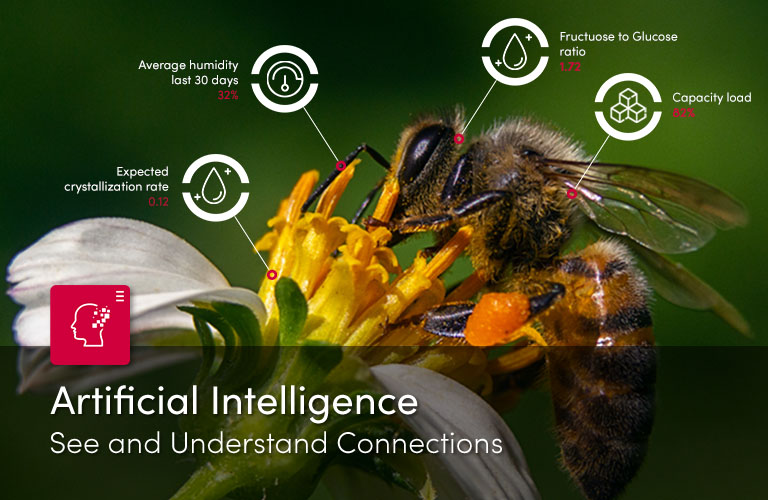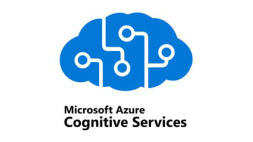
Making better decisions with Artificial Intelligence
need
complete information

Especially the creation, optimization, and discharge of product content are based on a multitude of very different process chains that are still predominantly run through manually in many companies. The result is inefficiencies that entail high costs and a large potential for errors. We support you in automating these workflows in a meaningful way - whether it's capturing data from images and text, transferring the information to your master data, or keywording images.
data check
and evaluate

As the masses of data increase, so do the problems and risks, while the volumes of data themselves become increasingly difficult to manage. This is where Artificial Intelligence (AI) comes in: As a self-learning application, it counteracts these problems. AI is capable of examining masses of data - such as texts, images, videos, faces, locations or objects - within a very short time, analyzing them and evaluating them on the basis of defined criteria. In the meantime, ready-made services are mainly used for this purpose, so that individual developments are no longer necessary.

AI can sift through and process objects such as images, videos, faces or text segments on the basis of predefined properties and rules - and do so in only a fraction of the time it would take employees. Companies therefore benefit enormously through the relief of resources, the reduction of costs and a noticeable increase in precision and process speed. Nevertheless, it is important to check whether the use of AI services is actually worthwhile in individual cases. We will be happy to advise you on the conception and selection of the services in question.
need
complete information

Especially the creation, optimization, and discharge of product content are based on a multitude of very different process chains that are still predominantly run through manually in many companies. The result is inefficiencies that entail high costs and a large potential for errors. We support you in automating these workflows in a meaningful way - whether it's capturing data from images and text, transferring the information to your master data, or keywording images.
data check
and evaluate

As the masses of data increase, so do the problems and risks, while the volumes of data themselves become increasingly difficult to manage. This is where Artificial Intelligence (AI) comes in: As a self-learning application, it counteracts these problems. AI is capable of examining masses of data - such as texts, images, videos, faces, locations or objects - within a very short time, analyzing them and evaluating them on the basis of defined criteria. In the meantime, ready-made services are mainly used for this purpose, so that individual developments are no longer necessary.
human and
data universe

AI can sift through and process objects such as images, videos, faces or text segments on the basis of predefined properties and rules - and do so in only a fraction of the time it would take employees. Companies therefore benefit enormously through the relief of resources, the reduction of costs and a noticeable increase in precision and process speed. Nevertheless, it is important to check whether the use of AI services is actually worthwhile in individual cases. We will be happy to advise you on the conception and selection of the services in question.
Countless application possibilities
In the meantime, AI is used in countless areas. For example - In content onboarding, product data is extracted from packaging using pre-trained models and automatically integrated directly into the corresponding attributes of a PIM system in existing data universes without manual effort. In marketing, automated indexing ensures that employees do not have to tag each individual image of a campaign themselves. In medicine, AI supports monitoring in social media for diagnostics and user-generated content. Manufacturers of machines, airplanes and trains also have to deal with an expanded service offering based on predictive maintenance, and thus with the topic of AI. The potential applications of AI will multiply in the coming years. As an implementation partner, we are actively involved in this development in a wide variety of integration projects.
Advantages
Deploying employees more sensibly
With AI's support for image and text recognition, your employees can get back to more demanding tasks.
Don't miss a thing
AI doesn't miss a thing - and that includes you. Only with complete information can you make reliable decisions.
Reduce errors
Mistakes are human and happen especially often in manual and repetitive tasks like indexing images. AI does not get tired and always stays focused on the task at hand.
Speed is the trump card
AI evaluates unstructured data at a speed that no human can achieve - for time-critical actions, this is a real game changer.
Smart partners
The integration of AI in companies requires a holistic approach. Existing business rules must be analyzed and potential benefits identified and evaluated. The integration of applications into the existing data universe requires smart technologies and partners. We will be happy to advise you on the selection of suitable AI services, support you with our years of experience and introduce you to our collaborations with proven AI experts.
FAQ
What is Artificial Intelligence (AI)?
Artificial intelligence (AI) is a branch of computer science that aims to reproduce aspects of human thought and action with computers. The basic factors for this are the automation of intelligent behaviour and machine learning. Artificial intelligence is concerned with developing intelligent software solutions and machines that act even more efficiently than humans. Areas of application are, for example, text and image recognition in data management systems or the recognition of trends through the analysis of master data in the area of business intelligence. It is no longer necessary to programme rigid rule systems; instead, the software or machine can analyse examples based on data and recognise certain patterns and regularities with the help of self-learning algorithms. In this way, data can be linked together and correlations such as inferences and predictions can be made.
What are the benefits of using artificial intelligence for companies?
The automated action of tools for the evaluation of data supports companies in knowing their customers and target groups better and addressing them more personally. This reduces wastage. It also simplifies processes and helps with decision-making thanks to the recognition of developments and trends. Artificial Intelligence saves resources so that you can devote yourself to core tasks. Artificial Intelligence enables a more comprehensive understanding of all available data and uses predictions to automate complex or mundane tasks. In Data Management, for example, with Digital Asset Management, Artificial Intelligence can relieve staff with functions such as Auto-Tagging and reduce the error-proneness of processes.
What are the advantages of using artificial intelligence in data management?
Thanks to AI's support in image and text recognition, you can deploy staff even more meaningfully and they can devote themselves to more demanding tasks. The artificial intelligence misses nothing and guarantees you the complete information for all data. AI does not get tired and always stays focused, for example, on manual and repetitive tasks such as indexing images. AI software is able to check, analyse and evaluate countless data - such as texts, images, videos, faces, places or objects - within a very short time and according to defined criteria.
How is Artificial Intelligence (AI) used in software development?
Today, complete AI frameworks (tools for developers) have emerged that enable people to develop AI applications themselves. The combination of various analysis techniques, for example in the area of text or image recognition, as well as the comparison of the collected data via statistical methods and the possibility of communicating the respective results are essential building blocks. Increasingly, the technologies used make use of linguistics, neurology and computer science. AI applications are fundamentally based on searching, planning, optimising, indexing and recognising data. The larger the input of the data set, the more accurate the output results.
The entire AI ecosystem consists of a number of algorithms and techniques such as Machine Learning, Deep Learning, Recommandation Engines, Predictive and Prescriptive Analytics. For enterprises, AI is a great opportunity and should be considered in the processes and planned software implementations.
Blog News
Advellence Solutions AG
Industriestrasse 50a
CH-8304 Wallisellen







